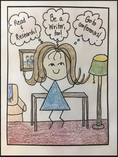
Choice. The choices we make as people everyday determine who we will become tomorrow. And, the choices we make as writers at the outset of our work, influence what our work will become through the process.
Choice. One of the most important ingredients necessary for writers to be fully engaged in their work. Choice suggests intention, decision-making, and purposeful craft...this trio of mindful thinking empowers our students to take ownership of and care deeply about their writing.
This week, as I considered my story, I wondered about whether I should quickwrite the story on lined paper first, or just begin drafting it in my blank picture book. I know that I am a planner, so my choice as a writer was to first begin drafting my story in text, sentence by sentence, in my writer's notebook. In this way, I could capture everything I could remember about the hamburger steak story in words before I try to pace it out across my picture book and add illustrations.
You have the same choice! Which approach best suits your style? Some writers prefer to sketch out a story before adding actual text. Sketching allows the writer's mind to see and visibly record the content of the story. And that is a terrific instructional approach with your students - all students - not just your primary kiddos. Other writers prefer to quickdraft, writing down everything about their stories in their notebooks before beginning to craft a product.
So, here is my quickdraft. As you read it, keep in mind that I am at this point simply trying to capture every detail that I can remember from that moment. (Deep Dive #5 Writers write down their stories fast and furious) This is not a draft to be scored for grammar, spelling, composition, etc. This is getting as much of my story down on paper before I start crafting it as a narrative piece.
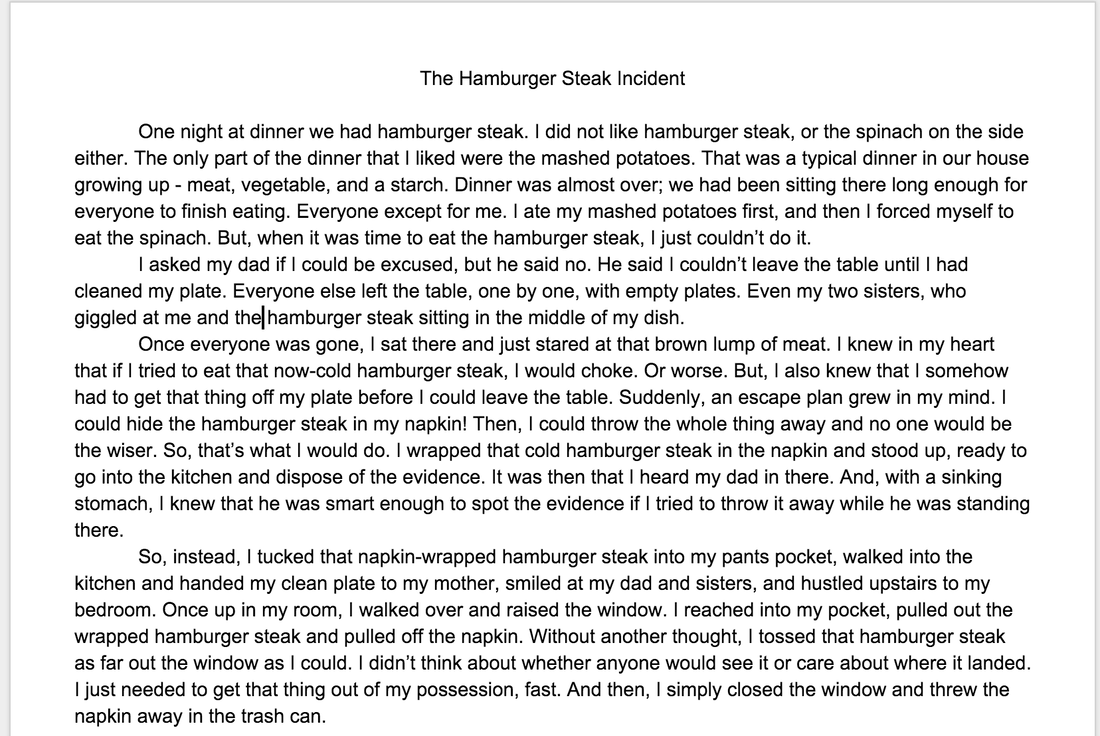
Looking at this draft using a lens of possible instructional guidance for the writer (me), I will need to address the following tenets of narrative writing that we considered in one of our ToeDips:
- Don't forget the dialogue! People in stories talk. When you are telling your story, try to remember what was said (or you can embellish since you might not remember exact words.) I did not recreate actual dialogue, although I referenced what characters said.
- Avoid the passive voice and describe the action and events as if you were making a movie in your mind. (Some parts of my draft are told in this active voice, some are not).
- Things happen in a beginning, middle, and end sequence - and there needs to be balance between the three story parts. The ending of my story is too abrupt.
Read through your draft using an instructional lens. Does your story have action? Is it told using an active voice that engages the readers? Do your characters talk? Is there actual dialogue? How balanced are your beginning, middle, and end? Next time I will begin sharing specific lessons that address these narrative components.
Keep writing, teachers! I would love to hear your stories, so please share them here or you can email them to me ([email protected]). Bravo to you for working through the same process that you ask your students to undertake. It builds empathy and strengthens your teaching. You are making the powerful choice to engage with writing and to build your own capacity as a writer.
Have a great writing week!
#allkidscanwrite
#allteacherscanwrite
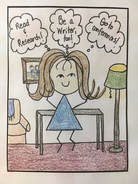
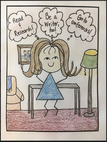
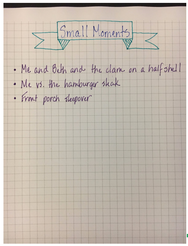
 RSS Feed
RSS Feed
